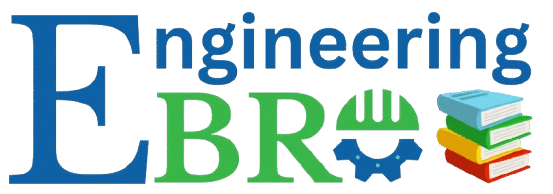In this blog, we will learn about the electrochemical reaction in depth to clear this concept good enough to understand it in a way that you could be able to explain it to a 6th grade kid
Table of Contents
Before we begin, let’s understand the following definitions first
🧪 Reactants
Reactants are the starting substances in a chemical reaction. They are the materials that undergo change during the reaction.
Example: In the reaction 2H₂ + O₂ → 2H₂O, the reactants are hydrogen (H₂) and oxygen (O₂).
🧪 Products
Products are the new substances formed as a result of a chemical reaction. They have different chemical properties compared to the reactants.
Example: In the reaction 2H₂ + O₂ → 2H₂O, the product is water (H₂O).
What is a Chemical Reaction?
🔬 Chemical Reaction
A chemical reaction is a process in which reactants are transformed into products through the rearrangement of atoms, resulting in the formation of new substances with different properties.
Example: 2H₂ + O₂ → 2H₂O
Now let’s understand this concept via a story way that even a 6th grade kid will be able to understand it,
🌟 Story: When Hydrogen and Oxygen Became Friends
Once there were two little gas friends in the air — their names were Hydrogen and Oxygen.
Hydrogen always came in a pair (like twins), and so did Oxygen.
One day, they met at a fire spark party. The spark told them,
“If you all hold hands, something cool will happen!”
So, 2 Hydrogens and 1 Oxygen held hands.
✨BOOM!✨
They magically turned into Water — something totally new!
It wasn’t just Hydrogen or Oxygen anymore. It was Water — the stuff we drink, play with, and use every day.
💧 What happened?
The old friends (Hydrogen and Oxygen) changed into something new (Water).
That change is called a chemical reaction.
🧪 Super Simple Example:
Hydrogen + Oxygen → Water
Now we know what is a chemical reaction, lets understand the types of it
Types of chemical reactions:
1. Combination Reaction
Two or more substances combine to form a single product.
Example: 2H₂ + O₂ → 2H₂O
2. Decomposition Reaction
One substance breaks down into two or more simpler substances.
Example: 2H₂O → 2H₂ + O₂
3. Displacement Reaction
A more reactive element replaces a less reactive one from its compound.
Example: Zn + CuSO₄ → ZnSO₄ + Cu
4. Double Displacement Reaction
Two compounds react and exchange their ions to form new compounds.
Example: NaCl + AgNO₃ → NaNO₃ + AgCl
5. Combustion Reaction
A substance reacts with oxygen to release heat and light.
Example: CH₄ + 2O₂ → CO₂ + 2H₂O
Example: 2H₂ + O₂ → 2H₂O
Example: 2H₂O → 2H₂ + O₂
Example: Zn + CuSO₄ → ZnSO₄ + Cu
Example: NaCl + AgNO₃ → NaNO₃ + AgCl
Example: CH₄ + 2O₂ → CO₂ + 2H₂O
Now lets understand what exactly is electrochemical reaction
⚡ What is an Electrochemical Reaction?
An electrochemical reaction is a chemical reaction where electricity is produced or used during the process.
🔋 1. In Batteries (Galvanic/Voltaic Cells):
The chemical reaction produces electricity.
Example: In a battery(Galvanic cell), chemicals react inside and generate electric current to power a device.
Zinc + Copper sulfate → Electricity + Zinc sulfate + CopperZn + Cu²⁺ → Zn²⁺ + Cu
⚙️ 2. In Electrolysis (Electrolytic Cells):
We use electricity to make a chemical change happen.
Example: Passing electricity through water splits it into hydrogen and oxygen gases.2H₂O → 2H₂ + O₂ (with electricity)
📚 Definition:
An electrochemical reaction is a chemical reaction that either produces electricity or uses electricity to bring about a chemical change.
Why do electrochemical reactions generate electricity?
Some electrochemical reactions generate electricity because of the movement of electrons during the reaction.
When a chemical reaction happens between two substances (like Zinc and Copper), electrons are transferred from one substance to another. These electrons don’t just disappear — they flow through a wire, and that flow is what we call electricity
🔋 Example from a Battery (Galvanic Cell):
- Zinc loses electrons (gets oxidized).
- Copper ions gain electrons (get reduced).
- The electrons that Zinc loses travel through a wire to Copper.
- That moving flow of electrons = electric current!
So, it’s the transfer of electrons between the chemicals that creates the electric flow.
⚛️ Step-by-Step Atomic-Level Process: Zinc & Copper Electrochemical Reaction

✅ Step 1: Oxidation at Zinc Electrode (Anode)
- Zinc atoms (Zn) on the surface of the zinc rod lose electrons.
- Each zinc atom becomes a Zinc ion (Zn²⁺) and dissolves into the solution.
- The electrons (e⁻) they lose are left behind in the metal rod.
Reaction:Zn → Zn²⁺ + 2e⁻
(Oxidation – loss of electrons)
✅ Step 2: Electron Movement Through Wire
- The free electrons in the zinc rod flow through the external wire toward the copper rod.
- This flow of electrons is what we use as electricity to power devices.
✅ Step 3: Reduction at Copper Electrode (Cathode)
- The solution around the copper rod contains Cu²⁺ ions (positively charged copper ions).
- These ions are attracted to the electrons arriving through the wire.
- Each Cu²⁺ ion gains 2 electrons and becomes a neutral Copper atom (Cu).
- These copper atoms deposit on the surface of the copper rod.
Reaction:Cu²⁺ + 2e⁻ → Cu
(Reduction – gain of electrons)
✅ Step 4: Ion Balance in Solution (Salt Bridge Role)
- The salt bridge allows ions to move between the two half-cells to keep everything neutral.
- Negative ions (e.g., SO₄²⁻) move toward the zinc side.
- Positive ions (e.g., Na⁺ or K⁺) move toward the copper side.
✅ Overall Reaction:
Zn + Cu²⁺ → Zn²⁺ + Cu
- Zinc gives electrons → becomes Zn²⁺
- Copper ions take electrons → become Cu
- Electron flow = electricity
